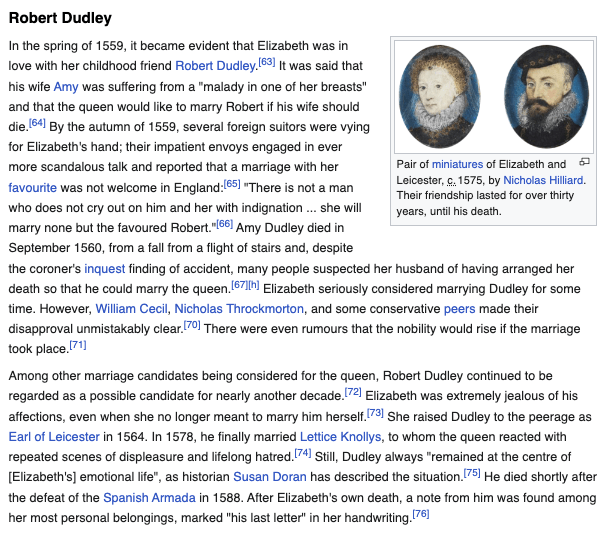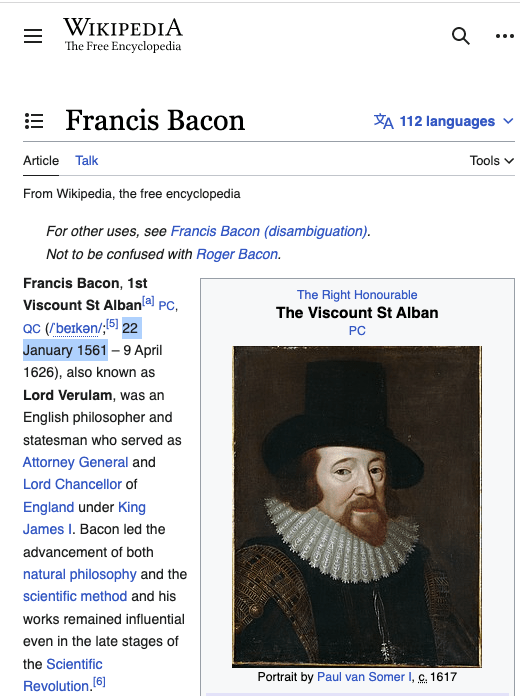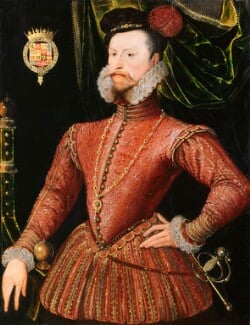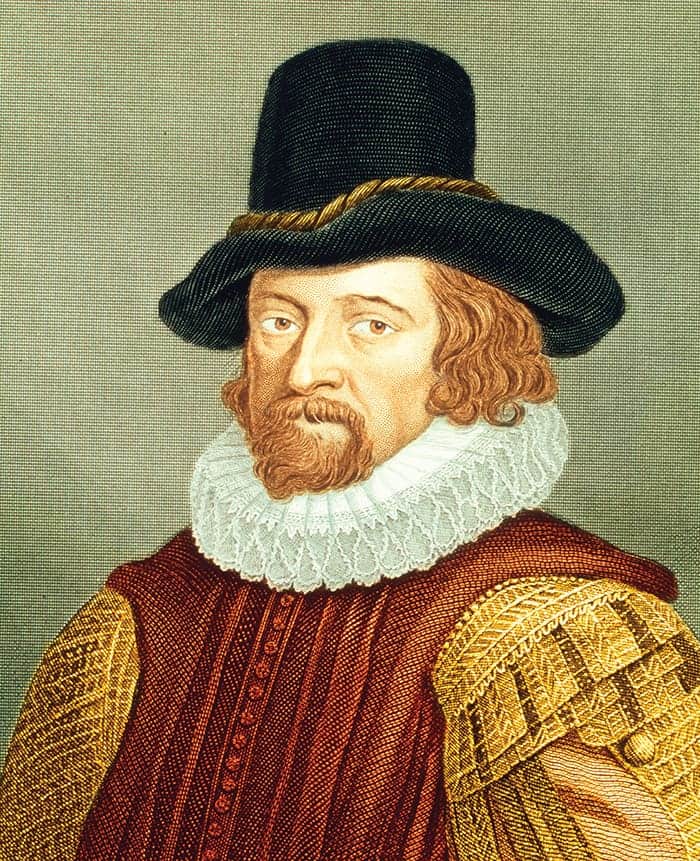Bacon’s Royal Parentage

(references prepared by Francis Carr & Lawrence Gerald)
I see you withdraw your favour from me, and now I have lost many friends for your sake: I shall lose you, too. You have put me like one of those that the Frenchmen call Enfans perdu…(lost children); so have you put me into matters of envy without Place or Strength.- Francis Bacon to Queen Elizabeth, “Apologia”
You are my own son, but you, though truly royal, of fresh and masterly spirit shall rule nor England nor your mother, nor reign o’er subjects yet to be. –1577, Queen Elizabeth I in an angry tone to a 16 year old Francis right after she reveals to Francis the secret of his parentage
The fact of Francis Bacon’s Parentage–the legitimate son of Queen Elizabeth and therefore the legal heir to the Throne—is indubitable, supported as it is , not only by a mass of circumstantial evidence but by such direct testimony as Leicester’s letter to King Philip of Spain, which Mme Deventer von Kunow discovered among the Spanish State Archives, begging King Philip to use his influence with Queen Elizabeth to secure his public acknowledgment as Prince Consort……..No one can possibly follow Mme D. von Kunow’s revelations and remain unconvinced.–Williard Parker in the Foreword to Francis Bacon, Last of the Tudors
The 1895 edition of British “Dictionary of National Biography” Vol.16 p114 under the heading “Dudley” :
“Whatever were the Queen’s relations with Dudley before his wife’s death, they became closer after. It was reported that she was formally betrothed to him, and that she had secretly married him in Lord Pembroke’s house, and that she was a mother already.” – January, 1560-1.
“In 1562 the reports that Elizabeth had children by Dudley were revived. One Robert Brooks, of Devizes, was sent to prison for publishing the slander, and seven years later a man named Marsham, of Norwich, was punished for the same offence.”
“When Queen Victoria was staying at Wilton House, the Earl of Pembroke told her that in the muniment room was a document which formed written evidence that in 1560 Elizabeth I married the Earl of Leicester. The marriage was performed in secret oath of absolute secrecy. At the time of that marriage the Queen was pregnant by Lord Leicester. The French and Spanish ambassadors reported this and the death of Amy Robsart to their Courts. They also told the Queen that if this was confirmed by her marriage to Leicester, France and Spain would jointly invade England, to remove the Protestant Queen and replace her by a Catholic monarch. Queen Victoria demanded that this document should be produced, and, after she had examined it, she put it on the fire, saying, “one must not interfere with history.”
This information was given to me by the 15th Earl of Pembroke, the grandfather of the present Earl.- Andrew Lyell
“…..it is not my meaning to treat him {Francis} as a ward: Such a word is far from my Motherly feeling for him. I mean to do him good.” – Lady Anne Bacon in a letter to Anthony Bacon, April 18th, 1593
1. See The Marriage of Elizabeth Tudor by Alfred Dodd
From the writing of Dr. William Rawley, Bacon’s secretary and chaplain:
York House was in the Strand, near the Watergate; York Place was a term used for Whitehall Palace (residence of Queen Elizabeth I). Surely Bacon’s own secretary, chaplain and biographer would know where he was born. But the term, York Place has since been disused and forgotten, so the hint–if that is what it is– it has not been taken up.
2. In the registry of births of St. Martin’s in the Fields Trafalgar Square, for January 26th, 1561, ‘Mr.’ has been interlineated in front of the name of Francis Bacon-added as an afterthought.
3. As a boy, and as a young man, Bacon was always persona grata at Court, although he had no official position and no title. In the Life of Francis Bacon, the first published biography of Bacon by Pierre Amboise, 1631 he writes :
“Francis Bacon saw himself destined one day to hold in his hands the Helm of the Kingdom. He was born of the Purple.“
4. Francis Bacon bore no resemblance to Sir Nicholas Bacon, but he did look like the Earl of Leicester, as shown in Hilliard’s miniatures.
5. When Nicholas Bacon died, in 1579, he left Francis, his second son, no money in his will. The will is in Somerset House. He assumed that Queen Elizabeth would provide for him instead.
6. Bacon did not go to Nicholas Bacon’s college in Cambridge, Corpus Christi, but to Trinity College, founded by Henry VIII, Queen Elizabeth’s father.
7. Through Bacon’s personal letters and circumstances regarding Edward Coke; his long-time rival whose jealousy and malice toward him was based on his knowledge of being the Queen’s son or as Coke publicly slandered him, “the Queen’s bastard.”
8. For five years, from 1580 to 1585, Bacon continually petitioned the Queen and others, regarding his “suit.” Could this be recognition as the Queen’s son? In 1592 he wrote to his uncle Lord Burleigh (William Cecil) :
“My matter is an endless question. Her Majesty has, by set speech, more than once assured me of her intention to call me to her service; which I could not understand out of the place I had been named to. I do confess, primus amour, the first love will not easily be cast off.”
In another letter to Burleigh he wrote:
“I have been like a piece of stuff betoken in a shop.” Coming from a commoner, this would be regarded as gross impertinence. Another complaint was made about the Queen in a letter to Anthony Bacon: ” I receive so little thence, where I deserve the best.”
9. In 1584, at the age of 23, Bacon was made Member of Parliament for Melcombe Regis (Portland), a royal borough. In those days, M.P.’s were not paid. At the same time Bacon had no brief’s, as a barrister. Who paid his fees?
10. In 1593, while still poor, Bacon was given Twickenham Park, a villa with 87 acres of parkland, opposite the Queen’s Palace at Richmond. It was at this house that most of his great works were written.
11. It is accepted that Elizabeth and Leicester were lovers. Immediately on her accession to the throne, she made Leicester Master of the Horse, an important position then, and gave him a bedroom next to hers at Whitehall. They had both been prisoners in the Tower of London in 1554 and 1555. In “Francis Bacon: Last of the Tudors“ by D.von Kunow,( page.11) the Tower chronicle mentions, recording a marriage ceremony between Elizabeth and Leicester conducted by a visiting monk.
12. A.L. Rowse, in “The Elizabethan Renaissance” , vol.1:
“Of course, in the country and abroad, people talked about the Queen’s relations with Leicester. In 1581 Henry Hawkins said that my Lord Robert hath had five children by the Queen, and she never goeth in progress but to be delivered.” Other such references occur in the State Papers.”
Others who went on record as saying that Elizabeth had children by Leicester: Anne Dowe (Imprisoned), Thomas Playfair, who said that Elizabeth had two children, (imprisoned), Robert Gardner (pilloried), and Dionysia Deryck. (pilloried) See All Is Not Gold That Glisters
13. When the Queen came to the throne, the Act of Succession (1563) stated that the Crown after her death would go to the issue of her body “lawfully to be begotten.” Eight years later, in 1571, this phrase was changed, to read “the natural issue of her body.” The words; lawfully to be begotten ; were omitted.
Bacon’s writing : In Happie Memorie of Elizabeth, Queen of England gives testimony to his and the Earl of Essex’s concealed Tudor identites.
In a letter to Essex, Bacon outlines the best approach for his brother to have with Elizabeth. The future of the Tudor dynasty depended on Essex heeding this advice. See The Two Brothers : Politics of the Royal Succession
14.While studying at Gray’s Inn his fees must have been paid by someone else, as Nicholas Bacon left him penniless in his will knowing that the Queen would take care of him.
15. In the Tower of London , in the Beauchamp Tower, in which Robert, Earl of Essex was imprisoned before his execution for treason, in 1601, there is an inscription carved into the stone wall which is still covered by a glass panel. It reads: “Robart Tidir”–the old spelling of Tudor. In the reference book in the Beauchamp Tower, this surname is twice deliberately misspelt Tider.
16. In Bacon’s first letter to the new King, James I, written in 1603 to put on record his allegiance, he used one suprising word, ‘sacrifice’ :
“not only to bring you peace- offerings, but to sacrifice himself a burnt-offering to your Majesty’s service.”
Another letter is quoted in ‘Baconiana’, a book published in 1679 (p.16) from Bacon to James I :
“I wish that I am the first, so I may be the last of sacrifices in your times.”
As far as we know, Bacon sacrificed nothing under the new monarch. He was knighted, given his first full-time office, and promoted to the office of Lord Chancellor by James.
17. In Canonbury Tower, Islington, in London, in the top room of the tower, there is an inscription on one of the walls, dating from the reign of Charles I. Bacon rented this house for nine years, from 1616 to 1625. In this inscription, all the kings and queens of England are listed, from William the Conqueror to Charles I . Between the names of Elizabeth and James I, there is a name that has been scratched out. The first letter may have been an F. What this name is, and why it was erased are two questions that remain unanswered.
18. Only three days after having been imprisoned in the Tower of London, after his trial for bribery, Bacon wrote this surprisingly peremptory letter to the Duke of Buckingham, the King’s chief minister :
May 31, 1621“Good my Lord,
Procure the warrant for my discharge this day. To die before the time of his Majesty’s grace, and in this disgraceful place, is even the worst that could be.”
This indicates that there was a secret deal with the King, that he would be quickly released from the Tower. What was Bacon’s part of the deal? Perhaps his promise to continue to keep his mouth shut about his real identity. Four months later , his enormous fine of $40,000 pounds was canceled. (Read the “Martyrdom of Francis Bacon “ by Alfred Dodd)
19. No one knows where Bacon is buried. His tombstone monument is in St. Michael’s Church, St. Albans.
There is no account of his death, funeral, or burial. The vault beneath the monument has been sealed up. His monument in this church is unusual, in that he is portrayed wearing a hat in church. Is this a symbol of something being concealed, keeping something under his hat? He wears a hat in all the portraits of him in adult life. The Latin inscription on the monument contains this sentence: ” Composita Solvantur” – let compounds be dissolved. This does remind one of Hamlet’s exclamation,
“Oh that this too, too solid flesh would melt, thaw, and resolve itself into a dew.”
And King Richard II says :
” O that I were a mockery King of Snow.”
Insightful commentary on Bacon’s Prayer written after he was forced to plead guilty to the bribery charges.
20. Bacon, and whoever wrote the Shakespeare plays have obviously taken pains not to leave any clear hint of their own places of birth and childhood surroundings. There is absolutely no case at all for saying the author to the plays must have been a Warwickshire man. Just as good a case could be made out for any other county- Hertfordshire or Middlesex for example. In the Shakespeare Concordance you will see how seldom any Warwickshire town or village is mentioned. Stratford -on -Avon is not mentioned once in 37 plays. St. Albans is mentioned 23 times. Why would William of Stratford deliberately cover his tracks like this? The only reference to the Forest of Arden, in As You Like It, are decided uncomplimentary :
“Is this the Forest of Arden?”
“Aye.”
Touchstone: ” I wish I were in another place, but we travellers must be content. ”
And further on he tells the country yokel, William,
” All our writers do now consent that thou art not ipse, but I am he.”
21. There is no denying that the Shakespeare plays are the most regal ever written-regal both in content and style. The kings and queens in these plays number 27, and a recurrent theme is legitimacy. Not only is monarchy the setting and the subject of the plays; the circumstances of their first performances were often regal. A third of all the Shakespeare plays were first performed for a royal occasion. These include The Winter’s Tale, Cymbeline, The Tempest, Macbeth, Measure for Measure, Merry Wives of Windsor, Twelfth Night, Henry VIII, King Lear, Love’s Labour’s Lost, and Othello. There is no record of William Shakespeare being presented either to Queen Elizabeth or to King James. If you ask people to say which, in their opinion, is Shakespeare’s greatest play, the majority will say Hamlet. The central character of this play is the heir to the throne- and one of his lines is ” but break, my heart, for I must hold my tongue.” Great fiction is always autobiographical. Every great novelist and playwright writes about his own life. There is always a close connection between the written works of a great author and his own life. Dickens, Wilde, Byron, Chekov, Tolstoy, Jane Austen, all show this very clearly. One of Jane Austen’s friends, Mrs. Barrett, said that Anne Elliott , the heroine of Persuasion , was Jane herself.
22. Peter Dawkins has published the following two essays on his website Francis Bacon Research Trust
Francis Bacon Born in the Purple
Royal Birth FBRT | Secret Bacon: Sir Francis Bacon, poet, mystic, seer, Rosicrucian master
________Shakespeare’s Two Houses
The former owner of New Place, the house Shakespeare bought for $60 pounds in Stratford in 1597, after only five years in London, was William Underhill, a kinsman of John Underhill, a gentleman usher to Francis Bacon. William Underhill’s stepbrother was William Hatton, whose widow, Elizabeth, in 1597 was courted by Bacon.
***
Edward Johnson writes that Wil Shaksper asked to be given a house at Stratford after he was packed off to Stratford as a safeguard when Queen Elizabeth became infuriated over Richard II because the play renounced the divine right of kings. In 1597, the Queen sought to discover the author with the intention of bringing him to the rack. In 1598 a new edition of Richard II appeared with the name “William Shake-speare” on the title page. (The pseudonym Shake-speare relates to the Greek goddess Pallas Athena, with her spear, the divine symbol of wisdom and power and the patroness of learning.) Shaksper was given 1000 pounds and New Place (which formerly belonged to Lady Anne Russell, who was Francis Bacon’s aunt) and told to lie low, which he did until after Queen Elizabeth’s death. Bacon knew Will Shaksper at the theatre and in his dilemma came to an arrangement to use his name as the author, even though Bacon had used the signature William Shakspeare before he had ever heard of the actor. Bacon wished to be certain that Shaksper was going to keep his part of the bargain, so New Place was not formally transferred to Shaksper until some years afterwards.
***
A previous owner of Shakespeare’s house in Blackfriar’s was Anne Bacon. (Francis’ stepmother) In 1604 her son, Matthew Bacon sold it to Henry Walker, who sold it in 1613 to William Shakesper. Matthew was admitted to Gray’s Inn in 1597.
https://sirbacon.org/links/parentage.htm
Robert Dudley, Earl of Leicester:
The true father of Sir Francis Bacon
Robert Dudley

Pair of miniatures of Elizabeth and Leicester, c. 1575, by Nicholas Hilliard. Their friendship lasted for over thirty years, until his death.
In the spring of 1559, it became evident that Elizabeth was in love with her childhood friend Robert Dudley.[63] It was said that his wife Amy was suffering from a “malady in one of her breasts” and that the queen would like to marry Robert if his wife should die.[64] By the autumn of 1559, several foreign suitors were vying for Elizabeth’s hand; their impatient envoys engaged in ever more scandalous talk and reported that a marriage with her favourite was not welcome in England:[65] “There is not a man who does not cry out on him and her with indignation … she will marry none but the favoured Robert.”[66] Amy Dudley died in September 1560, from a fall from a flight of stairs and, despite the coroner’s inquest finding of accident, many people suspected her husband of having arranged her death so that he could marry the queen.[67][h] Elizabeth seriously considered marrying Dudley for some time. However, William Cecil, Nicholas Throckmorton, and some conservative peers made their disapproval unmistakably clear.[70] There were even rumours that the nobility would rise if the marriage took place.[71]
Among other marriage candidates being considered for the queen, Robert Dudley continued to be regarded as a possible candidate for nearly another decade.[72] Elizabeth was extremely jealous of his affections, even when she no longer meant to marry him herself.[73] She raised Dudley to the peerage as Earl of Leicester in 1564. In 1578, he finally married Lettice Knollys, to whom the queen reacted with repeated scenes of displeasure and lifelong hatred.[74] Still, Dudley always “remained at the centre of [Elizabeth’s] emotional life”, as historian Susan Doran has described the situation.[75] He died shortly after the defeat of the Spanish Armada in 1588. After Elizabeth’s own death, a note from him was found among her most personal belongings, marked “his last letter” in her handwriting.[76]
_____
Source: Elizabeth I

Relevant Dates concerning Queen Elizabeth, Sir Francis Bacon & Robert Dudley
Sir Francis Bacon was born on January 22, 1561 right after Queen Elizabeth’s well-known love affair with Robert Dudley, the future Earl of Leicester.
In the spring of 1559, it became evident that Elizabeth was in love with her childhood friend Robert Dudley.[63]

Which means the the timing of Francis Bacon’s birth fits perfectly with the period of the torrid affair between Elizabeth and Dudley as described here:
The Affair of Robert Dudley and Queen Elizabeth I
Now, see the obvious similarities in the pictures below of both Sir Francis Bacon and his real father Robert Dudley, Earl of Leicester.

Robert Dudley, 1st Earl of Leicester

Francis Bacon, 1st Viscount St Alban PC
